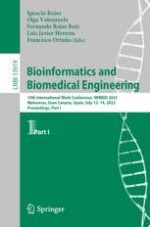2023 | OriginalPaper | Buchkapitel
Physiological Polyphosphate: A New Molecular Paradigm in Biomedical and Biocomputational Applications for Human Therapy
verfasst von : Werner E. G. Müller, Shunfeng Wang, Meik Neufurth, Heinz C. Schröder, Xiaohong Wang
Erschienen in: Bioinformatics and Biomedical Engineering
Verlag: Springer Nature Switzerland
Aktivieren Sie unsere intelligente Suche, um passende Fachinhalte oder Patente zu finden.
Wählen Sie Textabschnitte aus um mit Künstlicher Intelligenz passenden Patente zu finden. powered by
Markieren Sie Textabschnitte, um KI-gestützt weitere passende Inhalte zu finden. powered by
